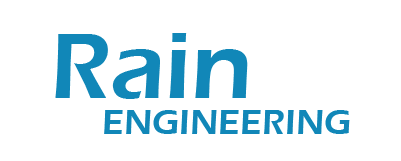If you’ve been keeping up with our latest blog postings, you know (full disclosure) we have a bias towards automation here at Rain Engineering.
Not only are automation and integration core components of our business, but we also wholeheartedly believe these modern components to be the key to a successful future in the manufacturing industry.
And it appears we may not be alone in this belief…
The recent release of the Industry 4.0 Strategic Business Report has boosted the hopes of many working in the manufacturing sector today.
In the report, it has been stated that, by the year 2030, the global market for Industry 4.0 could reach a whopping US $430.1!
From today’s US $113.3 billion, that’s a projected compound annual growth rate (CAGR) of approximately 18.6% over the next 7 years.
Folks, if that doesn’t prove to you that the wave of the future is in automation, I don’t know what will.
This is just a sampling of what we expect to come in the months and years ahead in the manufacturing world. And as this post-covid and high inflation world continues to expediate Industry 4.0’s progress, we may just find ourselves at the finish line much sooner than we had originally thought.
As mentioned above, this move towards automation and projected growth is not just in the United States.
The above statistics are on a global scale and, therefore, will include both domestic and overseas competitors.
While the United States market itself was estimated at roughly US $28.4 billion in 2022, the world’s second largest economy, China, is forecast to reach a projected market size of US $91.4 billion by the year 2030, trailing a CAGR of 23% over the analysis period 2022 to 2030.
This is concerning news to American manufacturers who continue to take drastic steps to rebuild and reshore this once thriving industry on domestic soil.
And though China may be the most immediate threat in the sector, they certainly are not the only one…
Both the Japanese and Canadian markets are projected to grow at 15.4% and 16.7% respectively over the 2022 to 2030 period.
And in Europe, Germany is forecast to grow at approximately 17.2% CAGR.
Though backed up by research and statistical data, the above noted projections are just that… projections.
Unfortunately, there are some global scale issues that could very well change the days ahead.
The largest of which would be the war in Ukraine, which continues to draw out with no predictable end in sight, leaving behind it a trail of global instability.
This instability could then be reflected in, not only food and fuel costs, but in rising retail costs as well.
If these costs should continue to rise and Americans are forced to have to “shop wisely” we may very well see a dip in consumer spending and, therefore, the US economy as a whole.
And if the US economy begins to slow, so too will the demand for products and services, many of which rely on the manufacturing industry in some shape or form.
(… See how fragile our economy is?)
Should this happen, despite the fact that an investment in Industry 4.0 has actually been proven to reduce a facilities overhead production cost by eliminating many of the headaches that come with day-to-day operations, the manufacturing sector, like many other industries, may find itself once again looking to slow up production and, therefore, reserve their capital until the market picks up again.
Ironically, some believe automation could very well be the key to our inflation worries too!
In his recent Forbes article, Qcify CEO and founder Raf Peeters, made his bold declaration that a facility placing their trust in Industry 4.0 would help decrease company expenditures related to necessary pay increases for workers who continue to become more and more economically strapped.
Asking his readers whether or not they believe we could take another approach to tempering skyrocketing prices that could potentially help slow down rising wages without holding back on investment, Peeters notes that, by investing in automation, a company can actually contribute to, “… innovation and healthy competition, which can help lower prices and keep inflation down.”
As you can plainly see, the future is uncertain.
Despite any uncertainties, though, according to some of industry’s top minds, the future does look bright for manufacturers and the continued growth of the automation industry.
Just as the global pandemic worked to speed up facility dependency on automation services, so too could any one of the above hurdles.
… And though we can all agree the American — and global — economy is a fragile thing, one constant over the past several years has been the continued growth and dependency on Industry 4.0.
This is just one more reason those of us who have already taken steps to secure our futures by investing in automation can sleep soundly tonight.
P.S. – If your facility has recently made the jump to Industry 4.0, but is having some difficulty getting all your employees on the same page, we have just what you’re looking for… And we call it Manufacturing KnowHow!
Manufacturing KnowHow is a brand new e-learning site that consists of a variety of web-based videos, tutorials, and worksheets designed specifically with you in mind!
By joining the Manufacturing KnowHow family, you’ll open yourself — and your team — up to a community of individuals who are all working towards one goal… To prepare and educate you on the skills you’ll need to continue to be valuable in the manufacturing field.
Combining the lifelong manufacturing experiences of some of the industry’s top leaders, you’ll soon find yourself ready to tackle anything your boss throws your way.
So, are you ready to take the manufacturing world by storm?
If your answer is YES, then you’re not going to want to miss this opportunity.
